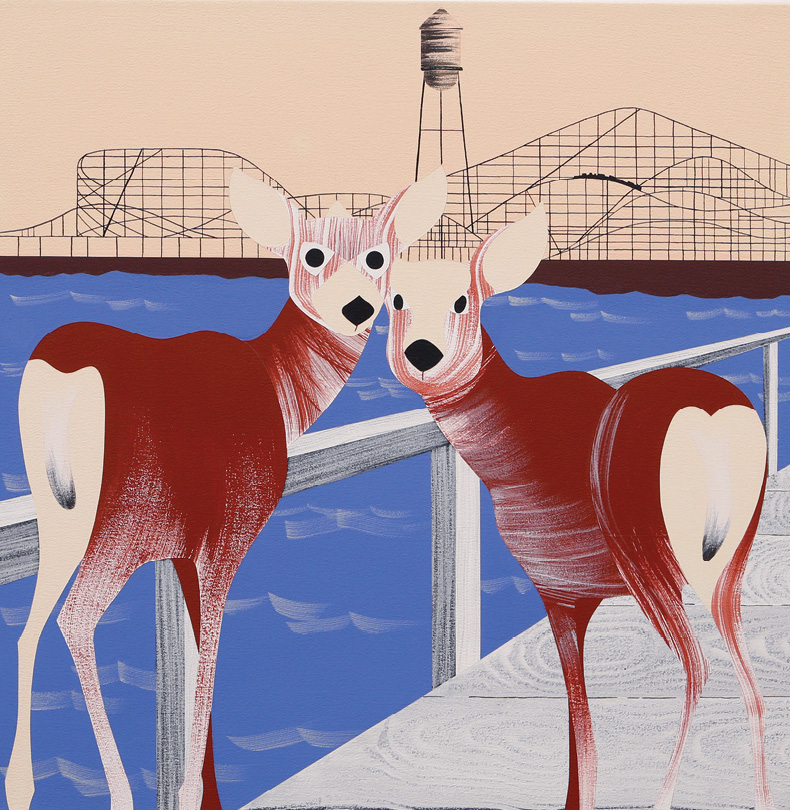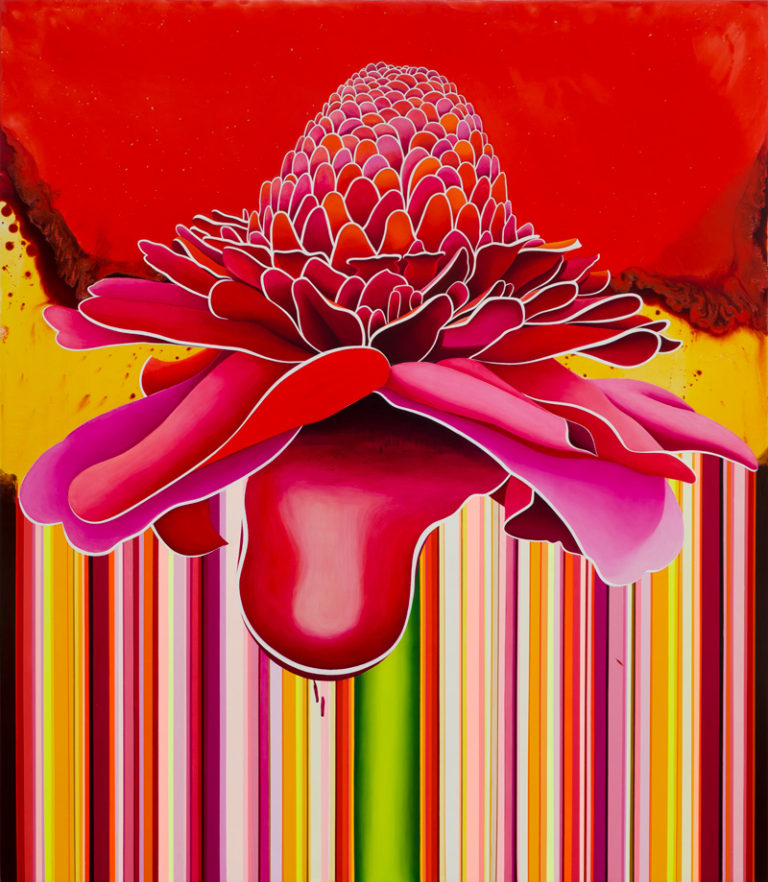Sometimes there is that rare and ineffable dialogue between artists that resists being quantified or easily understood. It’s like snow or the first time you fall in love. It works for no apparent reason, and is wonderful to behold. The current exhibition “Flora & Fauna” at 515 in the Bendix Building downtown exemplifies this phenomenon. All of the work in the show has some tangential relationship to nature and the colors and shapes that derive from it.
This theme extends to Cherie Benner Davis’ luminous paintings Push and Loopy (both 2016), which examine the ways in which we attempt to control and “design” nature. Employing colors that are seductive and suggestive, Davis’ paintings isolate certain aspects and parts of succulents, exaggerating specific elements to make them appear even more luminous. Thus, the reds are juicy and the yellows, nearly obscene. Even the titles suggest a state of uncontrollable passion.
Hilary Baker’s three paintings, titled after the specific locations they refer to: Bronson Gate, Paramount Pictures (2018), Parking Lot, Hollywood Park (2019) and Deer, Pacific Ocean Park (2017), investigate our fractured relationship to the natural world, and how nature, specifically predatory animals, respond to ongoing human encroachment. Baker positions her animals amidst the decay and detritus of vanishing cityscapes. In each of these paintings, the animals, whether they are deer, horses or rats, appear startled or ill-at-ease, turning their heads to gaze at us gazing back at them. The way we view these paintings duplicates in some ways our relationship to the rapidly disappearing landscapes and the animals we encounter there, stunned and frightened by our human advancements into their native terrain. The result is a kind of reversal where we, as viewers, become the object of their fascination.
David Eddington also demonstrates a strange fascination with nature, and his large-scale diptych entitled Child of Colonial Rule (2019) is simultaneously beautiful and disturbing in its hidden content. The work functions as both a landscape painting and a portrait of a young Korean girl, who stands demurely along the painting’s edge as though awaiting permission to enter the scene. The young woman represents a “comfort girl,” a woman forced into sexual slavery by the Imperial Japanese army during WWII. Eddington’s landscape is surreal and haunting. The bark on trees is blood red, the surrounding landscape empty with the exception of the girl in white and the outline of a man, who appears to be flying a kite that then transforms into a strangely ominous white cloud—or is it a bomb?
The idea that something or someone is vanishing, even as we stand looking at these paintings, persists. In Cherie Benner Davis’ work, parts of the flowers have been excised, leaving us with only fragments to assemble or reimagine. In Baker’s paintings, the natural habitats that once belonged to the native wildlife have been replaced by shopping malls and car dealerships, and in Eddington’s large diptych the viewer comes face to face with the veiled atrocities of war, though not explicitly expressed, leaving us to wonder what the future holds for any of us.



